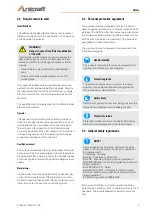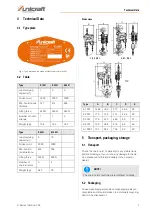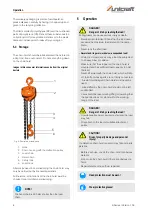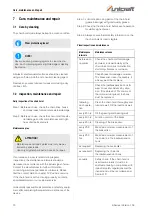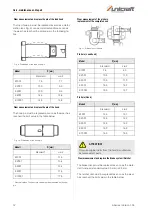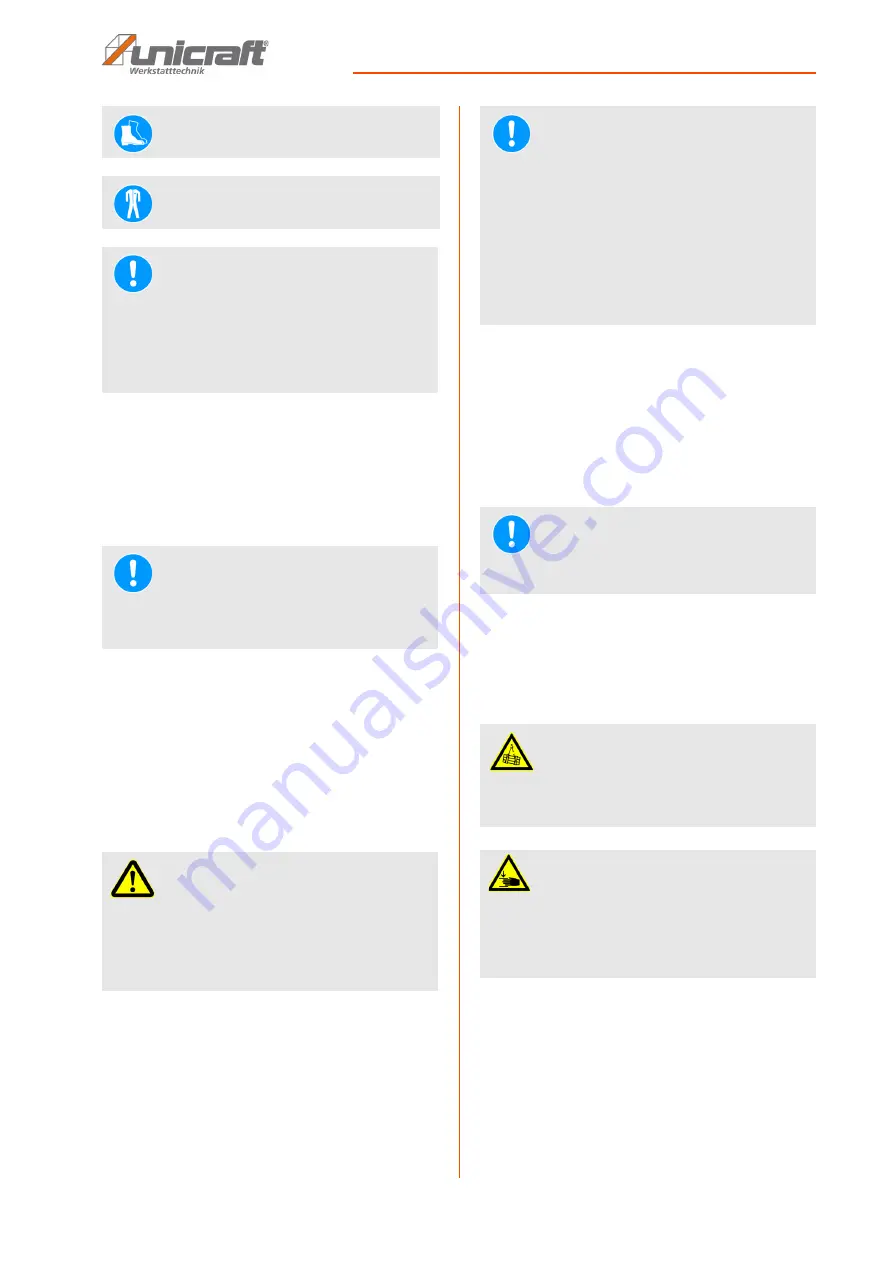
Operation
K-Series | Version 1.03
9
6.1 Operating conditions
The working area has to be protected against fire and
explosions and free from corroding and toxic sub-
stances.
Dangerous goods like molten, toxic or radioactive mate-
rial must not be moved with the the chain hoist.
Operating temperature range: -10 °C to +50 °C
6.2 Test run
Before using the chain hoist to lift a load, a no-load test
should be carried out to test all functions.
6.3 Raising a load
Step 1: Attach the hook of the chain hoist to a suitable
support and close the safety catch
Step 2: Attach the load to the load hook of the chain
hoist and close the safety catch.
Step 3: Carefully lift the load with the hand chain (turning
the hand chain wheel and the hand chain clock-
wise) until the load chain is tensioned.
Step 4: Raise the load only a little way initially and check
that the cable and load are stable.
Step 5: Raise the load slowly and steadily upwards.
6.4 Sink a load
Step 1: Sink the load steadly and evenly downwards.
(Turning the hand chain wheel and the hand
chain counter-clockwise).
Step 2: Put the load on a stable and secure undergroud.
Step 3: Open the safety catch of the load hook and dis-
connect the load.
Wear safety boots!
Wear protective clothing!
NOTE!
- Operating personnel must be familiar with the oper-
ation and functions the chain hoist and the safety
regulations pertaining to it.
- The operator is responsible for ensuring that all op-
erating personnel have had the necessary training.
NOTE!
It is strongly recommended to adjust the end of the
hand chain so that it is 500 mm to 1000 mm above
the floor.
ATTENTION!
The operator must have a clear view over the entire
lifting process. If this is not possible, a second per-
son must be available for instruction.
Before operating the chain hoist, the operator must
check that the entire lifting path is safe
NOTE!
- Do not wrap the load chain around the load.
- The load chain must be not urned in itself.
- Check the center of gravity of the attachment point
to prevent movement and slippage of the load.
- Slings (eyelet, chain, etc.) must lie loosely in the
hook base.
- Hook nose may not be loaded.
- Close the safety catch
NOTE!
The operator must have a sufficient free moving
space.
DANGER!
Danger of life by crashing the load!!
Danger of the brake system overheating when loads
are lowered particularly frequently within a short time
without a cooling phase.
CAUTION!
Risk of crushing!
Injuries to hands and fingers may result from
improper use the chain hoist.
- Do not hold the upper and lower limbs between the
load and the ground when lowering the load.





